Something is fascinating about knowing where the biggest crowds in America gather, where life feels loudest, where cultures collide, and where everyday moments become part of a larger story. We all have that mental map of cities that constantly make headlines or slip into conversations, and naturally, those places spark our curiosity. That may be why we’re drawn to the sense that certain cities hold more stories than others. Every city, every state carries a distinct vibe and character, each waiting to unfold its own drama.
So, when we think about the largest U.S. cities by population, our thoughts naturally drift toward conversations about where ambition meets opportunity, where schools flourish, businesses grow, streets buzz, and festivals fill the air with music and aromas. Some cities carry the weight of history and tradition, while others are defined by tech innovation, music, or cultural diversity. Together, they capture the essence of the country.
In this article, we’ve carefully curated a list of the largest U.S. cities by population to see how America is growing and evolving.
Top 20 U.S. Cities by Population (2025 Estimates)
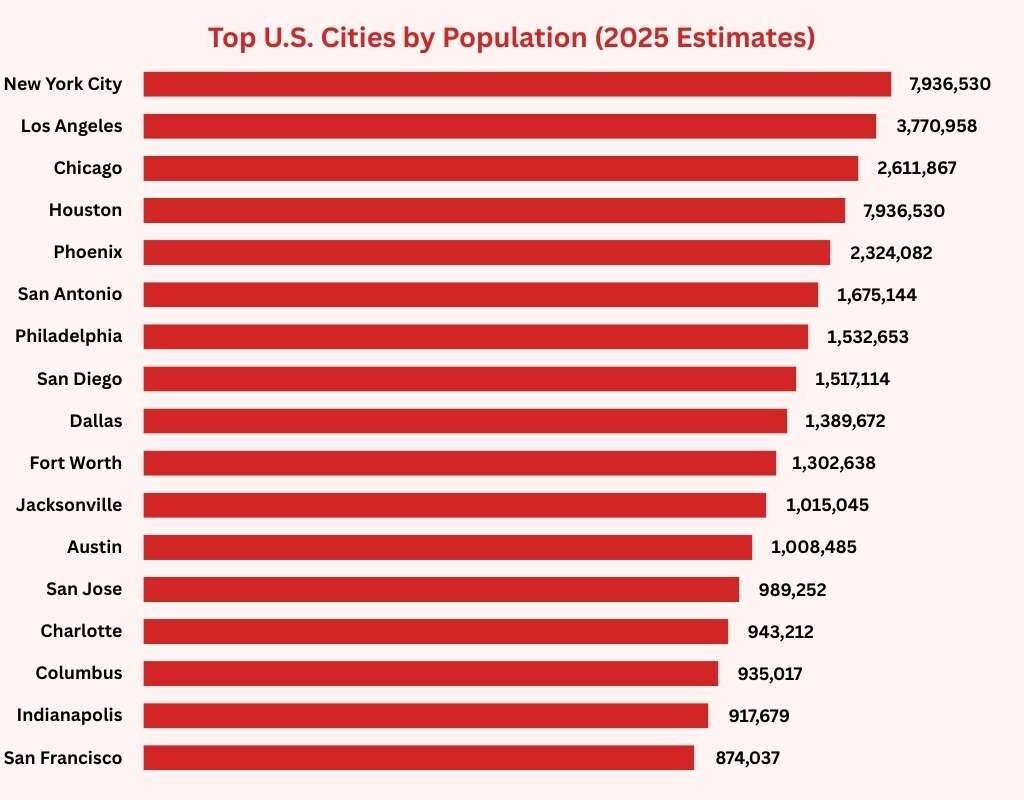
| Rank | City | State | 2025 Population Estimate | 2020 Census | Annual Change |
| 1 | New York City | New York | 7,936,530 | 8,740,292 | -1.98% |
| 2 | Los Angeles | California | 3,770,958 | 3,895,848 | -0.66% |
| 3 | Chicago | Illinois | 2,611,867 | 2,743,329 | -1.00% |
| 4 | Houston | Texas | 2,324,082 | 2,299,269 | 0.21% |
| 5 | Phoenix | Arizona | 1,675,144 | 1,612,459 | 0.75% |
| 6 | San Antonio | Texas | 1,532,653 | 1,439,257 | 1.23% |
| 7 | Philadelphia | Pennsylvania | 1,517,114 | 1,600,684 | -1.09% |
| 8 | San Diego | California | 1,389,672 | 1,386,292 | 0.05% |
| 9 | Dallas | Texas | 1,302,638 | 1,303,212 | -0.01% |
| 10 | Fort Worth | Texas | 1,015,045 | 923,602 | 1.84% |
| 11 | Jacksonville | Florida | 1,008,485 | 951,880 | 1.14% |
| 12 | Austin | Texas | 989,252 | 965,827 | 0.48% |
| 13 | San Jose | California | 943,212 | 1,009,319 | -1.38% |
| 14 | Charlotte | North Carolina | 935,017 | 875,752 | 1.28% |
| 15 | Columbus | Ohio | 917,679 | 906,418 | 0.25% |
| 16 | Indianapolis | Indiana | 874,037 | 887,177 | -0.30% |
| 17 | San Francisco | California | 767,968 | 870,518 | -2.60% |
| 18 | Seattle | Washington | 764,753 | 740,565 | 0.64% |
| 19 | Oklahoma City | Oklahoma | 715,893 | 683,078 | 0.92% |
| 20 | Denver | Colorado | 715,891 | 717,606 | -0.05% |
| 21 | Nashville | Tennessee | 686,513 | 689,700 | -0.09% |
| 22 | Washington, D.C. | District of Columbia | 684,394 | 670,839 | 0.40% |
| 23 | El Paso | Texas | 678,760 | 679,255 | -0.01% |
| 24 | Las Vegas | Nevada | 670,352 | 646,794 | 0.71% |
| 25 | Boston | Massachusetts | 639,411 | 675,466 | -1.11% |
1. New York City
2025 Population: 7,936,530
Annual Change: -1.98%
Density: 26,415 people/km²
New York City remains the undisputed champion in the list of the largest U.S. cities by population, though it’s experiencing a slight population decline post-pandemic. The city’s five boroughs continue to serve as America’s financial, media, and cultural capital, drawing millions of visitors and maintaining its status as a global metropolis. Wall Street anchors the world’s financial markets while Broadway defines American theater.
The city’s incredible diversity spans every continent, with neighborhoods like Chinatown, Little Italy, and Harlem preserving distinct cultural identities. Despite high living costs and urban challenges, NYC’s job market spans finance, tech, media, fashion, and hospitality. The subway system connects 8 million residents across 300 square miles, making it one of the world’s most efficient transit networks. Recovery efforts from pandemic-era losses focus on returning remote workers to Manhattan while supporting small businesses in outer boroughs.
2. Los Angeles
2025 Population: 3,770,958
Annual Change: -0.66%
Density: 8,014 people/km²
Los Angeles is the second-largest city, cementing its place in the population rankings through its sprawling entertainment industry and diverse economic base. Hollywood remains the global entertainment capital, while the Port of Los Angeles handles more cargo than any other U.S. port. The city’s Mediterranean climate supports year-round outdoor activities and agriculture within urban limits. LA’s population reflects America’s changing demographics—Hispanic residents now constitute nearly half the population, with significant Asian American and African American communities.
Tech companies increasingly set up offices in Silicon Beach, complementing traditional aerospace and fashion industries. Though metro rail expansions and bike-sharing programs offer alternatives, traffic congestion remains a significant challenge. Homelessness and housing affordability dominate local politics, while environmental initiatives address air quality and water conservation in this desert metropolis.
3. Chicago
2025 Population: 2,611,867
Annual Change: -1.00%
Density: 11,468 people/km²
Despite modest population decline, Chicago maintains its position as America’s third-largest city, anchoring the Midwest in the list of the largest U.S. cities by population. The city’s central location makes it a transportation and logistics hub. O’Hare Airport ranks among the world’s busiest, and rail networks connect the East and West coasts. Chicago’s economy has expanded beyond manufacturing into finance, technology, and healthcare, with companies like Boeing and Abbott headquartered downtown.
The Loop’s skyscrapers house major commodity exchanges, while neighborhoods like Lincoln Park and Wicker Park attract young professionals with vibrant nightlife and cultural scenes. Winters test residents’ resolve, but summers bring festivals, lakefront activities, and baseball fever. Deep-dish pizza and jazz music remain cultural exports, while architecture tours showcase innovations from Frank Lloyd Wright to contemporary designs. Crime rates in specific neighborhoods present ongoing challenges, though downtown revitalization continues attracting investment and tourism.
4. Houston
2025 Population: 2,324,082
Annual Change: +0.21%
Density: 3,628 people/km²
Houston’s growth is prominently featured among the nation’s largest cities, driven by energy, aerospace, and medical industries. The town serves as America’s energy capital, housing major oil and gas companies while increasingly investing in renewable energy infrastructure. NASA’s Johnson Space Center manages human spaceflight operations, while the Texas Medical Center ranks as the world’s largest medical complex. Houston’s diversity rivals New York’s; no single ethnic group forms a majority, creating affluent cultural neighborhoods and cuisine scenes.
The lack of zoning laws results in unusual development patterns, with strip malls adjacent to residential areas. Air conditioning makes humid summers bearable, though hurricane threats require constant preparedness. The port handles massive shipping volumes, supporting international trade throughout the Southwest. Traffic congestion reflects rapid growth, while flooding concerns drive infrastructure improvements and green space development.
5. Phoenix
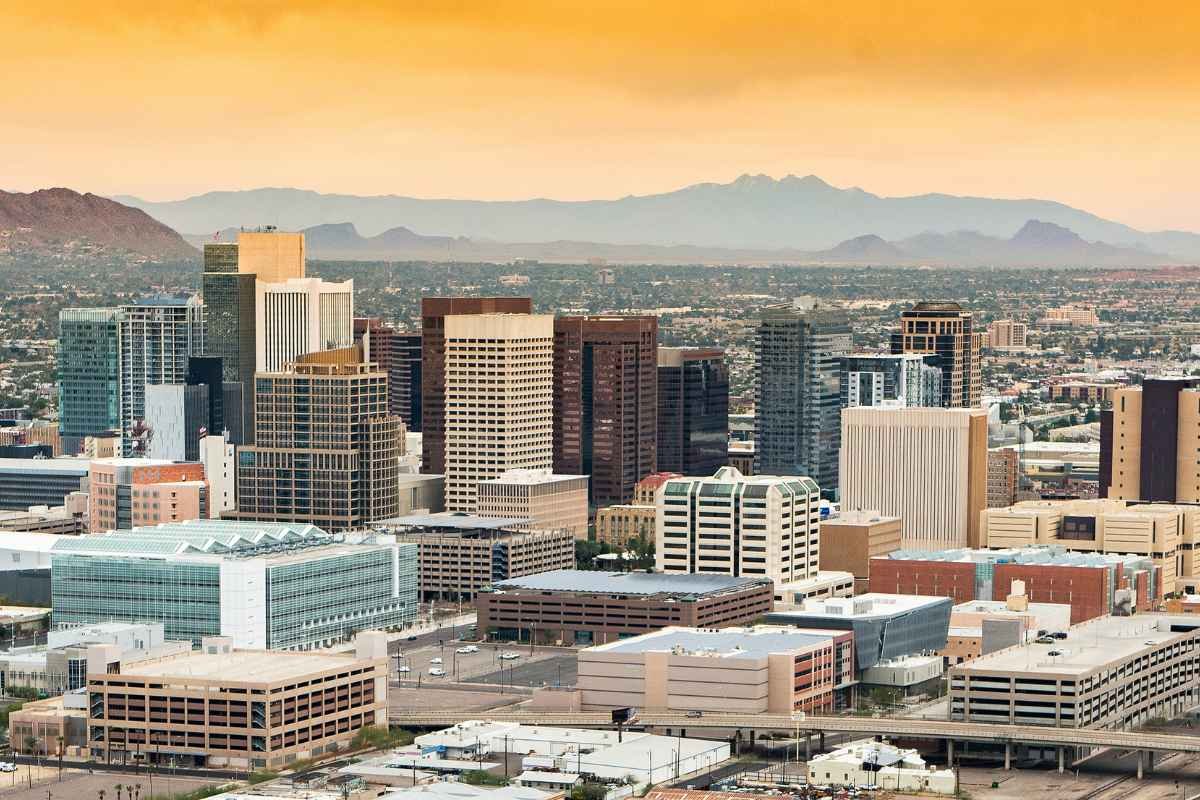
2025 Population: 1,675,144
Annual Change: +0.75%
Density: 3,232 people/km²
Phoenix continues benefiting from Sunbelt migration and business relocations from higher-tax states. Within a century, the desert metropolis transformed from a small agricultural town into America’s fifth-largest city. Tech companies establish operations in the “Silicon Desert,” while tourism and spring training baseball drive seasonal economies. Retirees and young families appreciate year-round sunshine, though summer temperatures exceeding 110°F test residents and infrastructure. Water scarcity concerns prompt conservation efforts and innovative supply management from the Colorado River and underground aquifers.
Hispanic culture strongly influences local architecture, food, and festivals, while Native American tribes maintain a strong presence and casino operations. Golf courses and resorts cater to winter visitors, though debates continue about water usage for recreational purposes. Urban sprawl extends across multiple cities in the Valley of the Sun, creating one of America’s largest metropolitan areas.
6. San Antonio
2025 Population: 1,532,653
Annual Change: +1.23%
Density: 3,072 people/km²
San Antonio’s steady rise keeps it in the population spotlight, driven by military installations, healthcare, and tourism centered around the historic Riverwalk and Alamo. The city’s Hispanic majority creates vibrant cultural celebrations like Fiesta San Antonio, while Tex-Mex cuisine originated in local neighborhoods. Military bases, including Fort Sam Houston and Lackland Air Force Base, anchor the economy, while the South Texas Medical Center rivals Houston’s healthcare reputation. Basketball fans support the San Antonio Spurs with legendary devotion, while mariachi music and folklorico dancing preserve Mexican traditions.
The Riverwalk development transformed downtown into a major tourist destination, connecting hotels, restaurants, and cultural attractions along the San Antonio River. Low living costs attract families and businesses, though rapid growth strains infrastructure in surrounding counties. Colonial Spanish architecture distinguishes San Antonio from other major Texas cities, while missions established by Spanish colonists earn a UNESCO World Heritage designation.
7. Philadelphia
2025 Population: 1,517,114
Annual Change: -1.09%
Density: 11,292 people/km²
Despite a slight population decline, Philadelphia keeps its historic importance in the list of the largest U.S. cities by population, serving as America’s birthplace with Independence Hall and the Liberty Bell. The city’s medical and educational institutions anchor knowledge-based industries and research, including the University of Pennsylvania and Temple University. Philadelphia’s neighborhoods preserve distinct identities, South Philly’s Italian markets, Northern Liberties’ art scene, and Germantown’s African American heritage. Cheesesteaks and hoagies represent local cuisine, while passionate sports fans support Eagles football, Phillies baseball, and 76ers basketball.
The city’s location between New York and Washington attracts businesses seeking lower costs than Manhattan while maintaining East Coast access. Manufacturing heritage transitions to biotech and financial services, though some neighborhoods’ poverty rates remain above national averages. Art museums, including the Philadelphia Museum of Art and Barnes Foundation, house world-class collections, while murals throughout the city create the world’s most extensive outdoor art gallery.
8. San Diego
2025 Population: 1,389,672
Annual Change: +0.05%
Density: 4,262 people/km²
San Diego’s appeal keeps it firmly among the nation’s most populous cities, offering near-perfect weather, beaches, and a growing biotech industry. The city’s proximity to Mexico creates strong cultural and economic ties, while military installations, including Naval Base San Diego, support defense contractors and research. Balboa Park houses multiple museums, the San Diego Zoo, and cultural venues within 1,200 acres of urban green space. Tech companies are increasingly opening offices to attract talent who prefer San Diego’s lifestyle over Silicon Valley’s intensity.
Tourism drives substantial revenue through attractions like SeaWorld, Gaslamp Quarter nightlife, and professional sports teams, including the Padres baseball and the planned return of NFL football. Housing costs rival Los Angeles while salaries often lag, creating affordability challenges for middle-income residents. Cross-border commuting and trade with Tijuana influence daily life and economic patterns. Environmental initiatives address renewable energy, water conservation, and protecting coastal ecosystems along the Pacific shoreline.
9. Dallas
2025 Population: 1,302,638
Annual Change: -0.01%
Density: 3,835 people/km²
Dallas remains a cornerstone in the list of the largest U.S. cities by population, serving as the economic engine of North Texas through finance, technology, and telecommunications. The town hosts primary corporate headquarters, including AT&T, American Airlines, and numerous Fortune 500 companies. Dallas-Fort Worth International Airport ranks among the world’s busiest, connecting the region globally while supporting logistics and distribution industries. The city’s arts district houses multiple theaters, museums, and concert halls, while Deep Ellum offers live music venues and creative spaces.
Professional sports teams create regional entertainment, including the Cowboys football (though based in nearby Arlington), Mavericks basketball, Stars hockey, and Rangers baseball. Oil wealth built early fortunes, though the economy now diversifies across technology, healthcare, and international trade. Hispanic and African American communities contribute significantly to local culture and politics. Urban development patterns typical of Sunbelt cities create sprawling suburbs connected by highways, though downtown revitalization attracts young professionals seeking urban lifestyles.
10. Fort Worth
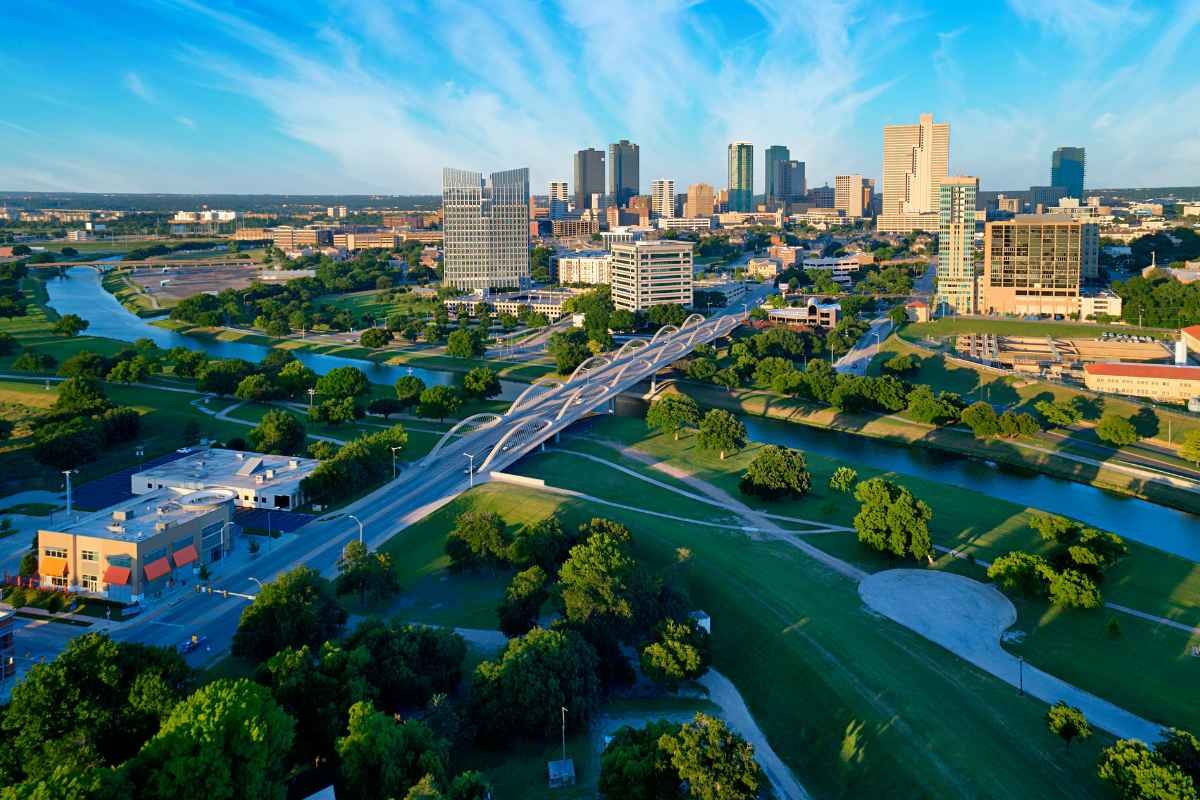
2025 Population: 1,015,045
Annual Change: +1.84%
Density: 2,898 people/km²
Fort Worth’s rapid expansion secures its spot among America’s largest cities, maintaining Western heritage while embracing modern industries. The city’s “Cowtown” identity persists through the Fort Worth Stockyards, where cattle drives and rodeos preserve frontier traditions. Major defense contractors, including Lockheed Martin, manufacture military aircraft, while American Airlines maintains significant operations at DFW Airport. The Cultural District houses world-class museums, including the Kimbell Art Museum and Amon Carter Museum of American Art. Fort Worth benefits from Dallas’ proximity while maintaining a distinct character and lower living costs. Hispanic residents constitute the largest ethnic group, influencing local politics and cultural celebrations.
The Trinity River project aims to transform downtown with parks, trails, and flood control. Oil and gas industries support related manufacturing and services, though economic diversification reduces energy dependence. Bass family philanthropy shapes cultural institutions and urban development, while the Fort Worth Zoo and Botanic Garden provide family entertainment and education.
11. Jacksonville
2025 Population: 1,008,485
Annual Change: +1.14%
Density: 447 people/km²
Jacksonville’s growth maintains its position in the list of the largest U.S. cities by population, benefiting from Florida’s business-friendly environment and port operations. The city covers more land than any other in the continental U.S., creating a unique suburban-urban blend across 875 square miles. Military installations, including Naval Air Station Jacksonville and Naval Station Mayport, anchor the economy alongside logistics companies utilizing the Port of Jacksonville. The city’s beaches attract tourists and residents, while the St. Johns River provides recreation and transportation corridors. Banking and insurance companies establish regional headquarters, taking advantage of Florida’s tax benefits and lower operating costs.
Professional sports include the Jacksonville Jaguars NFL team, though the city competes with other Florida metros for entertainment dollars. Hurricane risks require constant preparedness, while rapid suburban growth challenges infrastructure and environmental conservation. The African American community maintains a strong cultural presence through neighborhoods like Springfield and institutions like Edward Waters University.
12. Austin
2025 Population: 989,252
Annual Change: +0.48%
Density: 2,653 people/km²
Austin’s rise from quirky college town to central tech hub highlights its identity as one of the fastest-growing cities in America. “Keep Austin Weird” remains the unofficial motto as the city balances growth with cultural identity through music venues, food trucks, and local businesses. Major technology companies, including Apple, Google, and Meta, establish significant operations, earning the nickname “Silicon Hills.”
The University of Texas at Austin anchors education and research, while the South by Southwest (SXSW) festival brings global attention to music and technology innovation. From intimate clubs to large amphitheaters, live music venues support Austin’s “Live Music Capital of the World” reputation. Rapid growth strains housing affordability and transportation, prompting debates over development and public transit expansion. Food culture spans from barbecue joints to innovative restaurants, while craft breweries multiply throughout the city. Lake Austin and numerous parks provide outdoor recreation, though summer heat and flooding present challenges.
13. San Jose
2025 Population: 943,212
Annual Change: -1.38%
Density: 5,359 people/km²
San Jose anchors Silicon Valley in the list of the largest U.S. cities by population, though high costs drive some residents to seek alternatives. The town houses major technology companies, including Adobe, Cisco, and eBay, while serving as headquarters for countless startups and venture capital firms. Median home prices rank among America’s highest, creating stark income inequality between tech workers and service industry employees. The diverse population includes large Hispanic, Asian American, and international communities drawn by technology opportunities.
San Jose State University contributes to the educated workforce while maintaining the city’s cultural diversity. Public transportation connects to San Francisco and Peninsula communities, though traffic congestion remains problematic during peak hours. The Mediterranean climate supports year-round outdoor activities, while parks and hiking trails provide recreation near urban centers. Cultural attractions include museums, theaters, and sports teams like the San Jose Sharks hockey club. Housing affordability challenges force teachers, firefighters, and other essential workers to commute from distant communities.
14. Charlotte
2025 Population: 935,017
Annual Change: +1.28%
Density: 2,822 people/km²
Charlotte’s banking industry keeps it prominently featured among America’s largest urban hubs, serving as headquarters for Bank of America and primary operations for Wells Fargo. The city’s rapid growth transforms it from a regional center to a national financial hub, attracting businesses and residents nationwide. NASCAR’s roots run deep with Charlotte Motor Speedway hosting major races, while the Panthers NFL and Hornets NBA teams provide professional sports entertainment. The airport is a central American Airlines hub, connecting Charlotte globally and supporting business travel.
The University of North Carolina at Charlotte and other institutions contribute to workforce development and research initiatives. Neighborhoods preserve distinct identities from the historic Fourth Ward to the trendy NoDa arts district, while suburban growth extends into the surrounding counties. The city’s relatively affordable cost of living compared to other major financial centers attracts young professionals and families. Cultural diversity increases with international migration, while Southern traditions blend with cosmopolitan influences in dining, arts, and social scenes.
15. Columbus
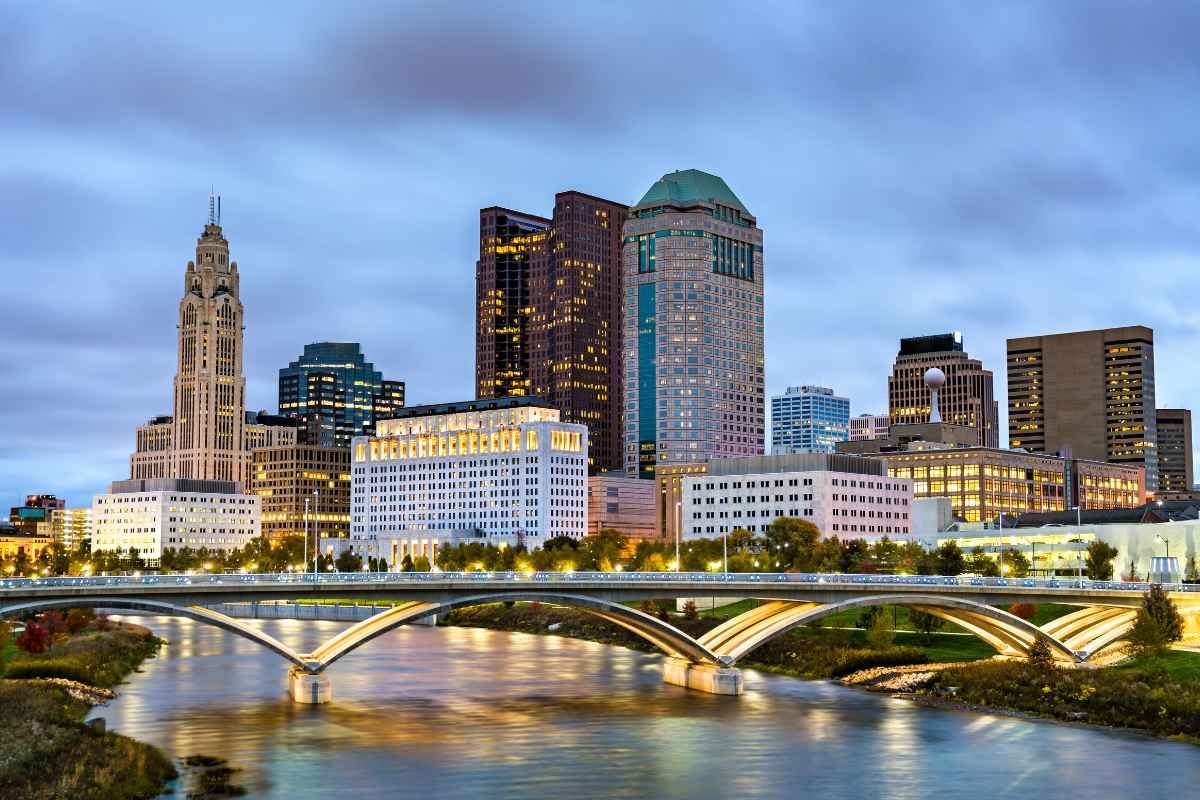
2025 Population: 917,679
Annual Change: +0.25%
Density: 1,740 people/km²
Columbus maintains steady growth, benefiting from diverse industries and the Ohio State University’s massive presence. The university enrolls over 60,000 students, creating vibrant campus neighborhoods and supporting research partnerships with local businesses. State government provides stable employment, while companies like Nationwide Insurance, Cardinal Health, and L Brands establish headquarters downtown. The city’s central Ohio location supports logistics and distribution centers serving Midwest and East Coast markets.
Short North arts district, German Village’s historic architecture, and Arena District entertainment create distinct urban experiences. Professional sports teams, including the Blue Jackets hockey and Crew soccer, build passionate fan bases, while the Ohio State Buckeyes football dominates regional sports culture. Living costs remain below national averages, attracting young professionals and families seeking urban amenities without coastal prices. The Scioto River and numerous parks provide recreation, while festivals celebrate diverse cultural communities throughout the metropolitan area.
16. Indianapolis
2025 Population: 874,037
Annual Change: -0.30%
Density: 951 people/km²
Despite a slight decline, Indianapolis is a major U.S. city, maintaining its reputation as America’s amateur sports capital and racing center. The Indianapolis 500 remains the world’s largest single-day sporting event, while the town hosts NCAA headquarters and numerous sporting events and championships. Pharmaceutical companies, including Eli Lilly and Company, anchor the economy alongside manufacturing and logistics operations, benefiting from its central location and transportation networks.
The city’s downtown revitalization includes canal walks, sports venues, and cultural districts connecting to surrounding neighborhoods through improved infrastructure. Indiana University-Purdue University Indianapolis (IUPUI) supports healthcare education and research, while the Indianapolis Motor Speedway Museum and Children’s Museum rank among the world’s largest in their categories. Though economic diversification continues, manufacturing heritage transitions to advanced manufacturing and life sciences, addressing job losses in traditional industries. Cultural attractions include symphony orchestra, art museums, and theater companies, while Monument Circle is the city’s symbolic and geographic center.
17. San Francisco
2025 Population: 767,968
Annual Change: -2.60%
Density: 17,246 people/km²
San Francisco’s declining population reflects post-pandemic changes while maintaining its iconic status in the list of the largest U.S. cities by population. The city’s 49-square-mile peninsula supports the world’s most expensive real estate market, forcing many residents to seek alternatives in surrounding Bay Area communities. Technology companies, from startups to giants like Twitter and Uber, maintain headquarters, though remote work policies reduce office demand and city tax revenue. Cable cars, the Golden Gate Bridge, and Victorian architecture preserve tourist appeal while residents deal with homelessness, public safety concerns, and progressive politics. Dining, arts, and cultural institutions, including the San Francisco Museum of Modern Art and San Francisco Symphony, maintain the city’s reputation for sophistication.
Neighborhoods from Chinatown to the Castro District preserve unique identities, while gentrification displaces longtime residents and businesses. Environmental initiatives address climate change, waste reduction, and sustainable transportation, though earthquake risks require constant preparedness. The port supports international trade, while Fisherman’s Wharf and Alcatraz Island draw millions of annual visitors.
18. Seattle
2025 Population: 764,753
Annual Change: +0.64%
Density: 3,332 people/km²
Seattle’s tech boom keeps it firmly placed among America’s major population centers, anchored by Amazon’s massive headquarters and Microsoft’s nearby Redmond operations. Starting with Starbucks at Pike Place Market, the city’s coffee culture influences global café trends while local roasters maintain artisanal traditions. Boeing’s aircraft production links Seattle to international aviation, though its corporate headquarters shifted elsewhere while manufacturing continues in surrounding areas. Music heritage, from grunge bands like Nirvana and Soundgarden to contemporary indie artists- keeps Seattle influential in popular culture.
The waterfront features ferries across Puget Sound, while Pike Place Market’s vendors remain a favorite for tourists and locals. Housing costs surged with tech growth, creating affordability challenges and homelessness concerns addressed by progressive city policies. Environmental initiatives in renewable energy, transit, and waste reduction show the city’s green commitment, while nearby mountains and waterways define the Pacific Northwest lifestyle. Sports teams enjoy loyal followings, including Seahawks football, Mariners baseball, and Sounders soccer.
19. Oklahoma City
2025 Population: 715,893
Annual Change: +0.92%
Density: 325 people/km²
Oklahoma City’s steady growth is driven by energy industries and government employment. The city serves as the state capital while hosting major oil and gas companies, though economic diversification includes aerospace, biotechnology, and information technology. The Oklahoma City National Memorial honors victims of the 1995 bombing while showing community resilience. The Oklahoma City Thunder NBA team enjoys passionate fan support, boosting downtown development in the entertainment district.
Bricktown’s warehouse district renewal highlights restaurants, entertainment venues, and canal boat tours connecting local attractions. Affordable living draws families and businesses, while ongoing MAPS (Metropolitan Area Projects) investments strengthen infrastructure and quality of life. Native American culture remains central through tribal headquarters, casinos, and celebrations, while cowboy traditions remain visible in rodeos and the western lifestyles. Tornado risks demand preparedness, though mild winters and open plains offer plenty of outdoor recreation opportunities.
20. Denver
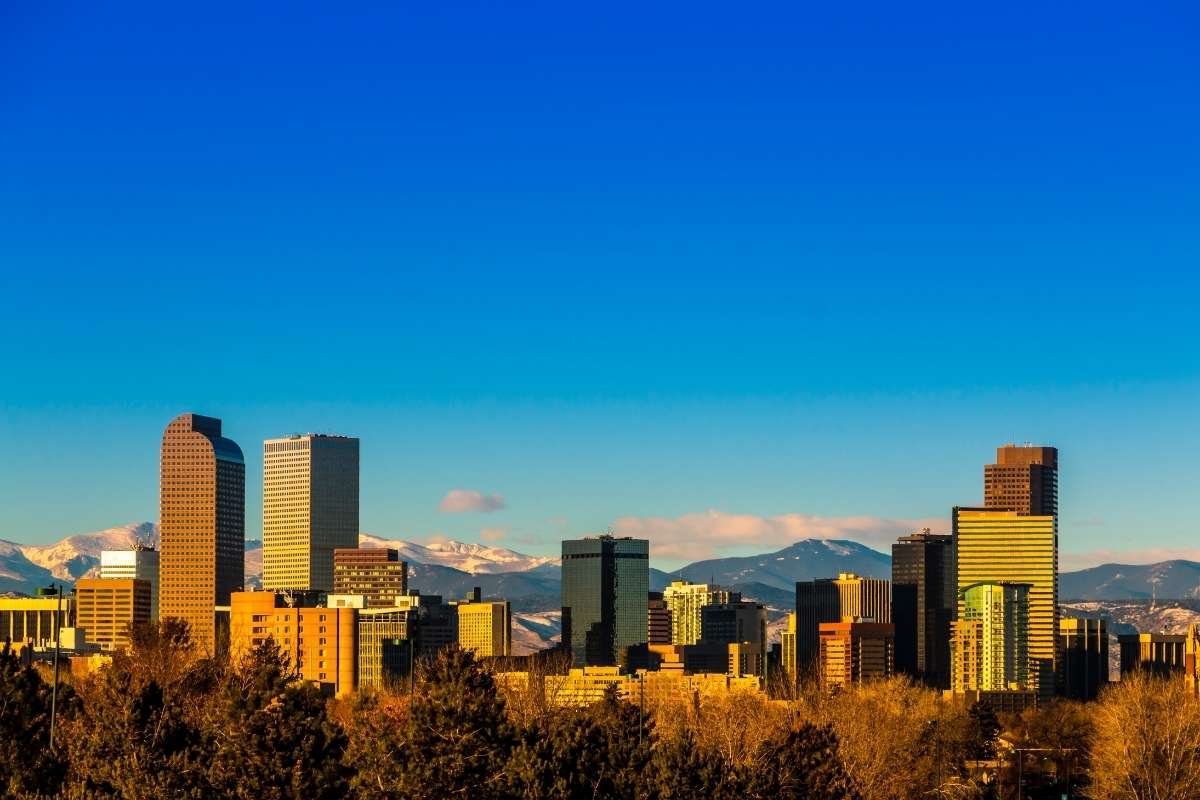
2025 Population: 715,891
Annual Change: -0.05%
Density: 1,678 people/km²
Denver’s place as the Mountain West’s biggest Metro shows its influence as a business hub and outdoor gateway. Known as the “Mile High City,” its elevation attracts athletes and outdoor lovers alike, with skiing and hiking industries thriving alongside breweries and cannabis businesses. Denver International Airport is a central hub linking both coasts, while downtown’s LoDo district mixes historic character with new entertainment venues. Sports fans rally around the Broncos, Nuggets, Avalanche, and Rockies, while Red Rocks Amphitheatre draws global musicians to a natural stage.
The technology sector grows as workers seek a balance between city careers and mountain lifestyles, while aerospace and telecom remain essential industries. Housing affordability continues to challenge newcomers as population growth outpaces infrastructure. Environmental awareness drives water conservation and air quality programs, reminding residents of life in a high-desert climate. Denver stays dynamic, balancing tradition with modern appeal.
21. Nashville
2025 Population: 686,513
Annual Change: -0.09%
Density: 540 people/km²
Nashville serves as America’s country music capital while branching into healthcare, tech, and education. Music Row studios, Grand Ole Opry, and the Country Music Hall of Fame preserve its deep recording heritage, while Broadway’s honky-tonk bars give new artists live stages. Healthcare anchors the economy with Vanderbilt University Medical Center and HCA Healthcare, while biotech and pharmaceuticals steadily expand.
Tennessee’s no-income-tax policy attracts businesses and residents, adding to Nashville’s growth. Tourism flourishes with party crowds and cultural visitors, while neighborhoods like The Gulch, Music Valley, and East Nashville show different sides of city life. Sports passion includes Titans NFL football, Predators hockey, and a new wave of soccer fans supporting Nashville SC. Food remains a mix of Southern staples and global influences. Nashville balances entertainment with serious industry, ensuring its steady population strength.
22. Washington, D.C.
2025 Population: 684,394
Annual Change: +0.40%
Density: 4,251 people/km²
Washington, D.C.’s role as the nation’s capital keeps it unique among America’s biggest metros. Federal government jobs remain its backbone, while lobbying, consulting, and international organizations add layers to the professional mix. The Smithsonian museums, Kennedy Center, and National Gallery offer unmatched cultural depth, while monuments and memorials keep history close. The city’s diverse population has a strong African American heritage and increasing international migration, though gentrification raises affordability and housing concerns.
The Metro connects D.C. to Maryland and Virginia suburbs, though regional coordination remains challenging. Universities, including Georgetown and George Washington, expand the educated workforce. Diplomatic missions create a cosmopolitan environment with global dining and cultural events. Housing costs sit among the nation’s highest, highlighting income gaps between federal employees and service workers. Climate adaptation projects address flooding and heat island effects, while preservation efforts safeguard historic architecture against modern pressures.
23. El Paso
2025 Population: 678,760
Annual Change: -0.01%
Density: 2,543 people/km²
El Paso stands out in the list of the largest U.S. cities by population for its binational identity, shaped by its relationship with Ciudad Juárez, Mexico. The region is one of the largest cross-border metropolitan areas, with people constantly commuting for work, shopping, and family ties. Fort Bliss provides a strong military presence and economic security, while manufacturing and trade boost business ties across the border.
The city’s Hispanic identity influences food, music, and daily life, making it distinctly different from other U.S. metros. The University of Texas at El Paso leads research on border issues, healthcare, and engineering, serving a diverse student base. The desert climate encourages hiking and outdoor recreation, while the Franklin Mountains provide dramatic scenery within city limits. While median incomes remain lower than in Texas’s larger metros, El Paso’s affordability allows stable homeownership for many families. Festivals, cultural celebrations, and bilingual communities keep El Paso vibrant, while political focus on border security often places the city in national debates.
24. Las Vegas
2025 Population: 670,352
Annual Change: +0.71%
Density: 1,760 people/km²
Las Vegas carries its entertainment crown while branching into other industries. The Strip’s hotels, casinos, and shows attract millions of visitors annually, while downtown revitalization adds restaurants, art, and new housing. Nevada’s business-friendly policies attract companies from high-cost states like California, fueling economic and population growth. Logistics firms choose Las Vegas for its central location in the West, while tech startups test ideas in a less expensive market. The desert climate demands water-saving policies and constant power for cooling, with Lake Mead’s drought levels highlighting environmental limits.
Housing costs jumped during migration surges, though they remain cheaper than in California. Professional sports teams are now successful here, including the Golden Knights (NHL), Raiders (NFL), and Aces (WNBA), while the city eyes future league expansions. Red Rock Canyon and Lake Mead give locals an outdoor escape, though summer months keep most activity indoors. Las Vegas keeps reinventing itself beyond the Strip, balancing glitz with real community growth.
25. Boston
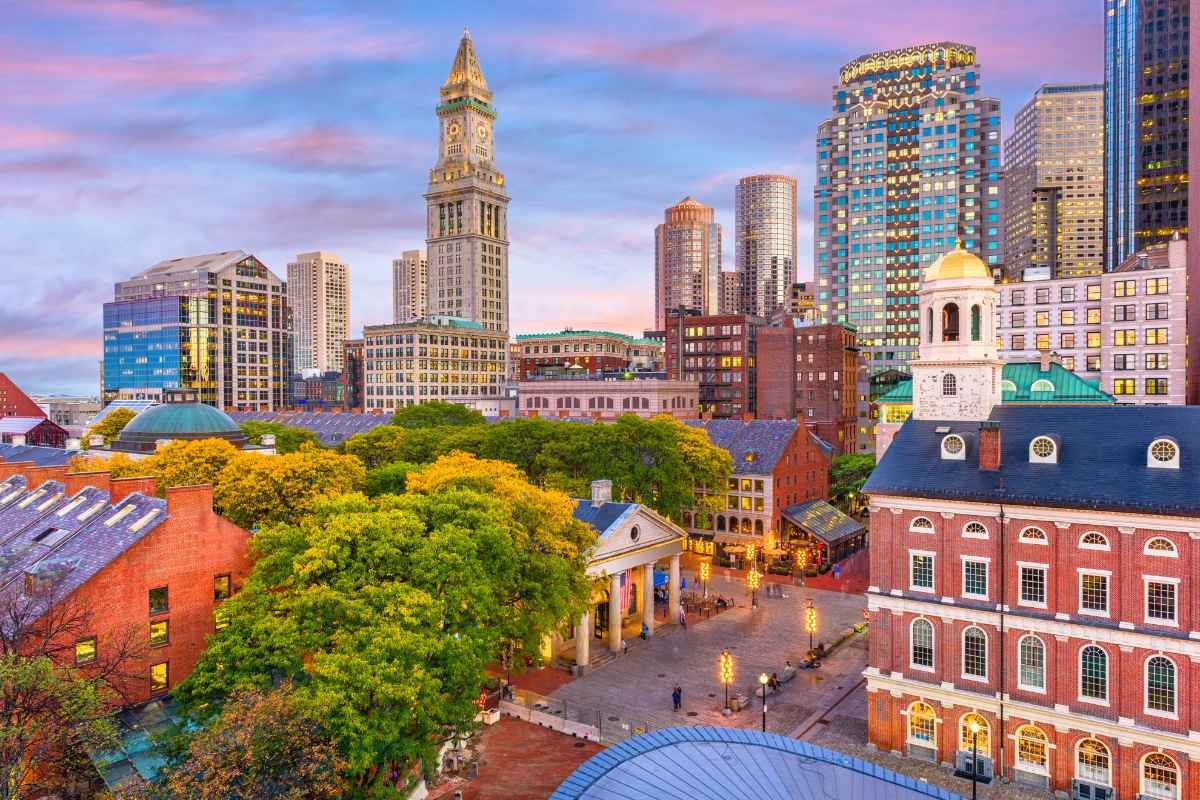
2025 Population: 639,411
Annual Change: -1.11%
Density: 5,344 people/km²
Boston’s place on the list of the largest U.S. cities by population comes from its unique history, education, and cultural mix. Boston is the ultimate college city, with Harvard, MIT, and dozens of other institutions that feed innovation in the biotech, healthcare, and technology industries. The Freedom Trail links Revolutionary War sites, while neighborhoods like Back Bay, Beacon Hill, and North End preserve distinct characters. Sports remain central with the Red Sox, Celtics, Bruins, and Patriots drawing intense loyalty and traditions.
The city’s hospitals, Massachusetts General and Brigham and Women’s, rank among the best globally, alongside primary medical research. Though maintenance challenges persist, public transit through the MBTA subway system keeps Boston connected. Housing costs remain among the highest in the U.S., pushing younger professionals toward suburban options. Despite affordability struggles, Boston’s intellectual and cultural weight keeps its population steady, making it one of the nation’s most significant metros.
Conclusion
Looking at the list of the largest U.S. cities by population through the lens of these twenty states gives us the living story of America. Each state has reasons for drawing people in: booming job markets, cultural richness, affordable living, or the promise of new opportunities. Some states, like California and Texas, dominate with multiple major metros, while others hold steady with one or two cities that leave an outsized mark on the national stage.
Together, they reflect how America continues to grow, shift, and adapt. Populations may rise faster in some places and slow in others, but the heartbeat of these states remains strong. Behind every statistic are millions of people shaping communities, building futures, and adding to the nation’s character. And that’s why the list of the largest U.S. cities by population is a snapshot of where the country is headed.

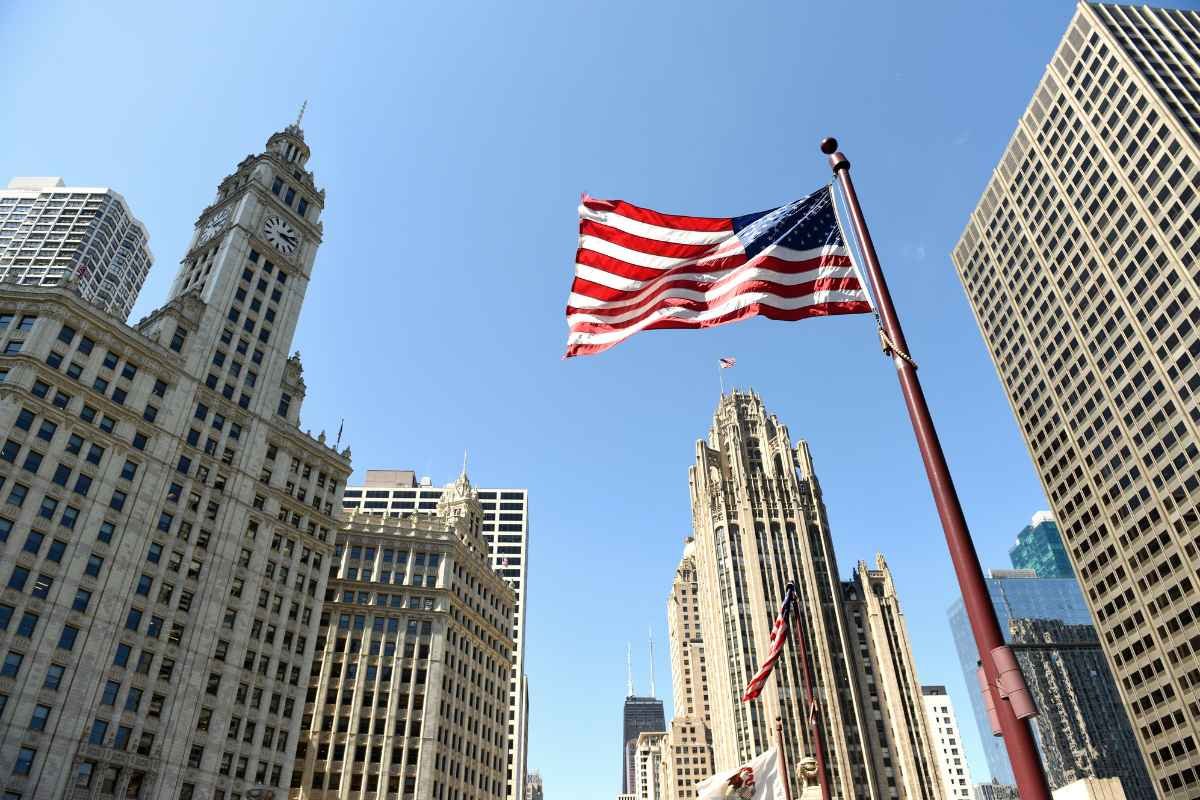
--1024x800.jpg)







